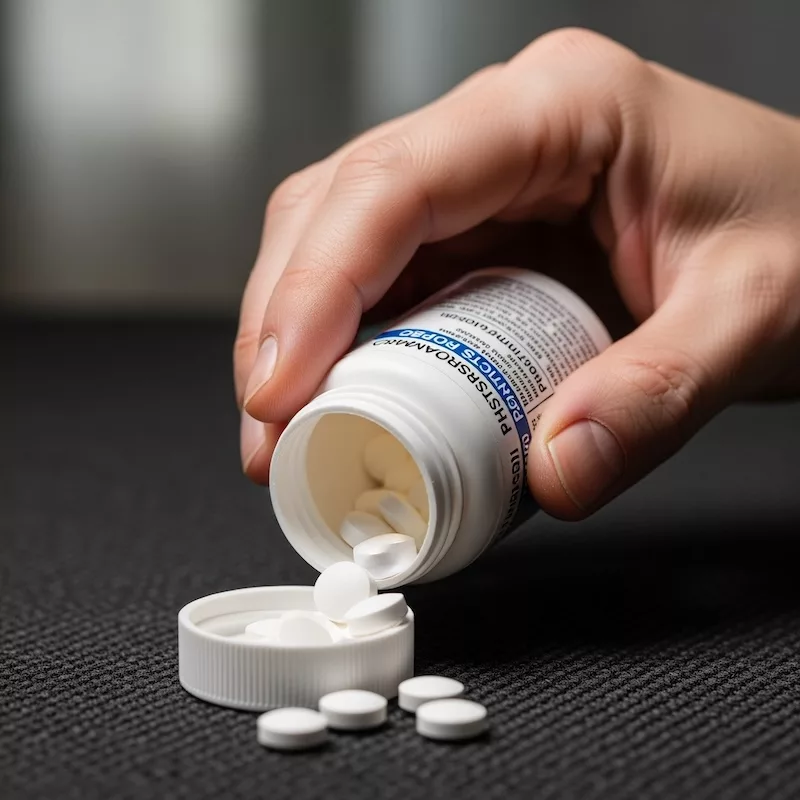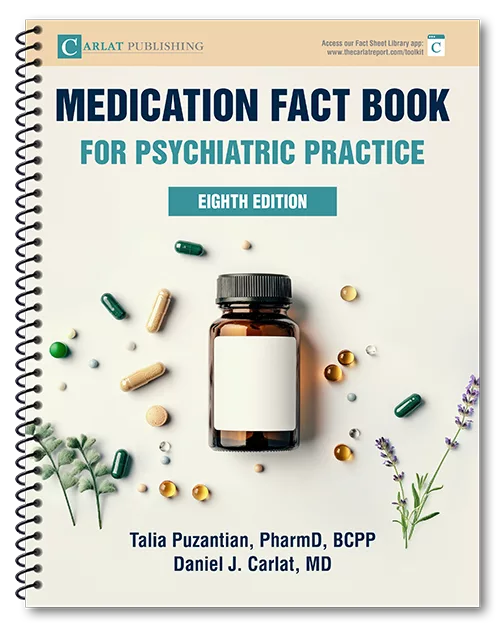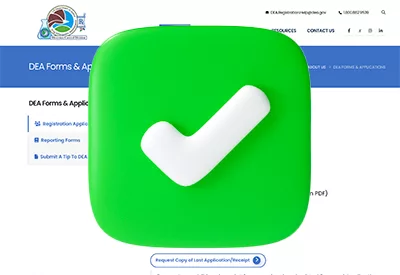Meds that require special skill to start: Clozapine and lamotrigine.
Publication Date: 09/15/2025
Duration: 10 minutes, 19 seconds
Transcript:
KELLIE NEWSOME: More tools of the titration trade with a focus on atomoxetine, ziprasidone, and quetiapine. Welcome to the Carlat Psychiatry Podcast, keeping psychiatry honest since 2003.
CHRIS AIKEN: I’m Chris Aiken, the editor in chief of the Carlat Report.
KELLIE NEWSOME: And I’m Kellie Newsome, a psychiatric NP and a dedicated reader of every issue. Today, we cover two medications where rapid titration can cause a dangerous inflammatory reaction: Clozapine and lamotrigine. We follow it with a research update on propranolol in panic disorder.
CHRIS AIKEN: Textbooks have always recommended a slow titration with clozapine, starting at 12.5 or 25 mg a day in divided doses and raising by daily increments of 25-50mg. That wisdom is still true, but we now have a better understanding of why. We used to think it was to prevent hypotension on the drug. We now know that slow titration of clozapine also prevents inflammatory reactions (allergies). When some medications are started too high, the body reads it as an attack – a foreign invader, like an allergy – and it responds with an inflammatory cascade. With Lamotrigine that can cause severe skin rashes, hepatitis, and bleeding. With clozapine, that reaction affects the heart, which gets inflamed with myocarditis. Other inflammatory reactions are also possible with clozapine; there is interstitial nephritis in the kidneys, colitis, hepatitis, as well as isolated fever and eosinophilia. And even if you titrate clozapine slowly, you can still run into trouble if you give it with a strong CYP 1A2 inhibitor, which will triple clozapine’s levels. Fortunately, there is only one strong CYP 1A2 inhibitor you need to watch for in psychiatry: fluvoxamine. Some authors recommend monitoring for inflammation while starting clozapine, such as by checking the C-reactive protein (CRP) and troponin levels along with the weekly CBC, which you normally check with clozapine, and checking these markers for the first 4-8 weeks of titration. If those inflammatory markers are rising, the thing to do is to slow the titration down and to stop it completely if you suspect myocarditis. Symptoms of myocarditis include chest pain, racing heart, shortness of breath, and malaise.
KELLIE NEWSOME: Let’s pause for a preview of the CME quiz for this episode. Earn CME for each episode through the link in the show notes.
CHRIS AIKEN: I’m Chris Aiken, the editor in chief of the Carlat Report.
KELLIE NEWSOME: And I’m Kellie Newsome, a psychiatric NP and a dedicated reader of every issue. Today, we cover two medications where rapid titration can cause a dangerous inflammatory reaction: Clozapine and lamotrigine. We follow it with a research update on propranolol in panic disorder.
CHRIS AIKEN: Textbooks have always recommended a slow titration with clozapine, starting at 12.5 or 25 mg a day in divided doses and raising by daily increments of 25-50mg. That wisdom is still true, but we now have a better understanding of why. We used to think it was to prevent hypotension on the drug. We now know that slow titration of clozapine also prevents inflammatory reactions (allergies). When some medications are started too high, the body reads it as an attack – a foreign invader, like an allergy – and it responds with an inflammatory cascade. With Lamotrigine that can cause severe skin rashes, hepatitis, and bleeding. With clozapine, that reaction affects the heart, which gets inflamed with myocarditis. Other inflammatory reactions are also possible with clozapine; there is interstitial nephritis in the kidneys, colitis, hepatitis, as well as isolated fever and eosinophilia. And even if you titrate clozapine slowly, you can still run into trouble if you give it with a strong CYP 1A2 inhibitor, which will triple clozapine’s levels. Fortunately, there is only one strong CYP 1A2 inhibitor you need to watch for in psychiatry: fluvoxamine. Some authors recommend monitoring for inflammation while starting clozapine, such as by checking the C-reactive protein (CRP) and troponin levels along with the weekly CBC, which you normally check with clozapine, and checking these markers for the first 4-8 weeks of titration. If those inflammatory markers are rising, the thing to do is to slow the titration down and to stop it completely if you suspect myocarditis. Symptoms of myocarditis include chest pain, racing heart, shortness of breath, and malaise.
KELLIE NEWSOME: Let’s pause for a preview of the CME quiz for this episode. Earn CME for each episode through the link in the show notes.
1. What is the primary cause of severe skin reactions during lamotrigine titration?
A. Toxic epidermal accumulation
B. Inflammation
C. Coagulation
D. Melanin receptor activation
Lamotrigine is another drug that can cause inflammatory allergic reactions if titrated too quickly. The most famous of these is Stevens-Johnson syndrome, a potentially fatal skin rash that almost got the drug pulled from the market when it was first FDA-approved for epilepsy in 1994. Back then, it was started at 100 mg, and around 1 in 10 patients had severe rashes on it. The drug company quickly figured out it could lower the rate to around 1 in 3,000 by slowing the titration, which is why we now start lamotrigine at 25 mg, raising it to 50 mg after 2 weeks, then to 100 mg a day another 2 weeks later. The titration is twice as slow if they are taking medications that raise lamotrigine like valproate, and twice as fast if they are taking carbamazepine, which cuts lamotrigine levels in half.
CHRIS AIKEN: Older patients and younger patients are more at risk for lamotrigine rash. Lamotrigine is not actually FDA approved in psychiatry under age 18, but it is for childhood epilepsy, and if you are using it off-label in children with bipolar disorder, I recommend checking the prescribing information. It has weight-based schedules for starting the drug in children with epilepsy that we should also stick to in psychiatry.
KELLIE NEWSOME: The slow titration may have warded off most serious rashes, but benign rashes are still common when starting lamotrigine – one in ten patients have them – and you still need to stop the medication at the sign of any rash within the first 2 months because you can’t tell which ones will go on to be severe. That can be heartbreaking, because for many patients with bipolar depression, this is the only drug that helps them, or the only one they can tolerate. Some of them plead to stay on it, but the answer is no – it is just too risky – but in 2010 Dr. Aiken did run the first psychiatric study of rechallenging patients with lamotrigine after a rash. Tell us what you found.
CHRIS AIKEN: I rechallenged 27 patients with a slow titration, starting at 5 mg a day and raising by 5 mg every two weeks until we got to 25 mg/day, then we followed the standard titration. So the whole titration takes about three months with this strategy. The success rate was 81% and there were no cases of serious rash. Other papers have tested this as well, and there are now just over a hundred published cases of rechallenge using similar strategies. Taking all these cases together, the success rate of rechallenge is 85%, and here’s an important tip if you are going to do it: Rechallenge is safer if you wait at least 4 weeks before restarting the med. That allows the inflammation to go down. It also gives you time to try another treatment – you wouldn’t want to attempt re-titration unless other options for bipolar depression, like lithium, pramipexole, and antipsychotics, have failed.
KELLIE NEWSOME: Rechallenge is also safer if the rash is benign. Here are signs of a severe lamotrigine rash:
CHRIS AIKEN: Older patients and younger patients are more at risk for lamotrigine rash. Lamotrigine is not actually FDA approved in psychiatry under age 18, but it is for childhood epilepsy, and if you are using it off-label in children with bipolar disorder, I recommend checking the prescribing information. It has weight-based schedules for starting the drug in children with epilepsy that we should also stick to in psychiatry.
KELLIE NEWSOME: The slow titration may have warded off most serious rashes, but benign rashes are still common when starting lamotrigine – one in ten patients have them – and you still need to stop the medication at the sign of any rash within the first 2 months because you can’t tell which ones will go on to be severe. That can be heartbreaking, because for many patients with bipolar depression, this is the only drug that helps them, or the only one they can tolerate. Some of them plead to stay on it, but the answer is no – it is just too risky – but in 2010 Dr. Aiken did run the first psychiatric study of rechallenging patients with lamotrigine after a rash. Tell us what you found.
CHRIS AIKEN: I rechallenged 27 patients with a slow titration, starting at 5 mg a day and raising by 5 mg every two weeks until we got to 25 mg/day, then we followed the standard titration. So the whole titration takes about three months with this strategy. The success rate was 81% and there were no cases of serious rash. Other papers have tested this as well, and there are now just over a hundred published cases of rechallenge using similar strategies. Taking all these cases together, the success rate of rechallenge is 85%, and here’s an important tip if you are going to do it: Rechallenge is safer if you wait at least 4 weeks before restarting the med. That allows the inflammation to go down. It also gives you time to try another treatment – you wouldn’t want to attempt re-titration unless other options for bipolar depression, like lithium, pramipexole, and antipsychotics, have failed.
KELLIE NEWSOME: Rechallenge is also safer if the rash is benign. Here are signs of a severe lamotrigine rash:
- Peeling of the skin, also called exfoliation or erythroderma
- Purple spots (Purpura), tenderness, or blistering
- A rash on the face, lips, genitals, palms, or soles of the feet
- Lymph swelling
- Constitutional symptoms like fever, malaise, muscle aches, sore throat
- On labs, signs of severe inflammation include eosinophilia, elevated LFTs, or C-reactive protein
When a patient calls with a lamotrigine rash, I have them stop the medication and I check for those signs and have them take a picture of the rash. If there is anything concerning, I’ll send them to urgent care, where the treatment is usually a prednisone taper. But psychiatric patients don’t always follow directions, so if they don’t go to urgent care and the rash looks serious, I’ll call that taper in myself as prednisone 10mg, start at 60 mg a day and lower by 10 mg every 2 days until you get to zero.
CHRIS AIKEN: Good reminder for all of us, and I wouldn’t rechallenge if any of those serious signs were present, at least not without dermatology approval.
KELLIE NEWSOME: Now for our research update from Daily Psych. The Daily Psych is one of rare social media feeds that actually improves mental health, and you can find it by searching for ChrisAikenMD on LinkedIn, Twitter,Facebook, and Bluesky. Today’s paper is also a rarity: The effect of sertraline with or without propranolol on panic attacks in women: a controlled clinical trial by Sahar Rouhzendeh and colleagues from the Journal of Pharmaceutical Health Care and Sciences. It’s one of only a handful of placebo-controlled trials of propranolol in anxiety disorders.
CHRIS AIKEN: This study randomized 60 women with panic disorder to either sertraline plus propranolol or sertraline plus placebo. The propranolol dose was low, just 20 mg a day, while other trials in panic have used up to 240 mg. They also used instant-release propranolol, but some authors prefer the extended-release forms for anxiety, as patients can experience worse anxiety when the dose wears off. But, despite those limitations, it worked. After 4 weeks, patients who took propranolol rated the severity of their panic attacks less, 6.6 compared to 13.1, a statistically significant difference.
KELLIE NEWSOME: Do you have any tips on starting psych meds? Send them to caiken@thecarlatreport.com. You’ll find more dosing secrets in our textbook Prescribing Psychotropics, the book that Nassir Ghaemi calls, "Not only useful, but engaging and entertaining."
CHRIS AIKEN: Good reminder for all of us, and I wouldn’t rechallenge if any of those serious signs were present, at least not without dermatology approval.
KELLIE NEWSOME: Now for our research update from Daily Psych. The Daily Psych is one of rare social media feeds that actually improves mental health, and you can find it by searching for ChrisAikenMD on LinkedIn, Twitter,Facebook, and Bluesky. Today’s paper is also a rarity: The effect of sertraline with or without propranolol on panic attacks in women: a controlled clinical trial by Sahar Rouhzendeh and colleagues from the Journal of Pharmaceutical Health Care and Sciences. It’s one of only a handful of placebo-controlled trials of propranolol in anxiety disorders.
CHRIS AIKEN: This study randomized 60 women with panic disorder to either sertraline plus propranolol or sertraline plus placebo. The propranolol dose was low, just 20 mg a day, while other trials in panic have used up to 240 mg. They also used instant-release propranolol, but some authors prefer the extended-release forms for anxiety, as patients can experience worse anxiety when the dose wears off. But, despite those limitations, it worked. After 4 weeks, patients who took propranolol rated the severity of their panic attacks less, 6.6 compared to 13.1, a statistically significant difference.
KELLIE NEWSOME: Do you have any tips on starting psych meds? Send them to caiken@thecarlatreport.com. You’ll find more dosing secrets in our textbook Prescribing Psychotropics, the book that Nassir Ghaemi calls, "Not only useful, but engaging and entertaining."


_-The-Breakthrough-Antipsychotic-That-Could-Change-Everything.webp?t=1729528747)



